
Fine Tuning Your Focus
Strategies to improve your ability to concentrate
Sideline Strains
How to avoid repetitive strain injuries











Strategies to improve your ability to concentrate
How to avoid repetitive strain injuries









Therapy is a treatment option for individuals diagnosed with SAD.
The common cold is synonymous with times of year when temperatures dip. When people spend more time indoors, they’re more vulnerable to contagious cold viruses. But the common cold is not the only health issue that presents itself most often when the mercury drops
Advertiser Here

Seasonal affective disorder, also known as “SAD,” affects millions of people every year The National Institute of Mental Health notes that SAD is a type of depression characterized by its recurrent seasonal pattern. Symptoms of SAD, which can include nearly daily and daylong feelings of depression, changes in appetite or weight and feelings of lower energy, last around four to five months Researchers are unsure about the exact cause of SAD, but in most people, its onset is believed to be connected to the reduction in hours of sunlight during the winter. (WebMD notes that around 10 percent of people with SAD get it in the reverse, experiencing symptoms of depression at the onset of summer as opposed to winter ) Despite uncertainty about the causes of SAD, the NIMH notes there are ways to treat the condition. And it might benefit people who have experienced SAD to begin treatment prior to winter, as NIMH notes treatments that begin before fall could help to prevent or reduce the depression associated with the condition
Individuals who suspect they have SAD should relay their concerns to their health care provider, who will then ask patients to fill out a questionnaire to determine if symptoms meet the criteria for SAD. If such a diagnosis is confirmed, individuals may be presented with any of the following treatment options
for around 30 to 45 minutes. The boxes filter out potentially harmful UV light, but alternative therapies may be recommended for individuals with certain eye diseases or those taking particular medications
According to the NIMH, cognitive behavioral therapy (CBT) has been adapted to help treat people with SAD.
CBT is a type of talk therapy, and CBTSAD typically entails two weekly group sessions for six weeks These sessions focus on replacing negative thoughts related to winter with more positive thoughts The therapy also tries to help individuals identify and schedule pleasant, engaging indoor or outdoor activities. The NIMH notes that researchers’ comparison of CBT-SAD with light therapy found both treatments were effective at improving SAD symptoms
Advertiser Here
Doctors may recommend patients with SAD take medications known as selective serotonin reuptake inhibitors, or SSRIs. Various types of depression have been found to disturb serotonin activity, and SAD is no exception SSRIs have been proven to effectively improve patients’ moods, but it’s important that individuals discuss the side effects of SSRIs with their physicians prior to taking medication.

Various changes to appearance and health are associated with aging
Issues such as diminished vision, waning muscle strength and gray hairs are among the more common and noticeable side effects of aging.
Cognitive decline is another symptom often associated with aging, even if that needn’t be the case
Certain lifestyle choices can protect against cognitive decline and dementias
While there is no surefire way to prevent dementias, here are some good habits for maintaining cognitive function well into your golden years.
Harvard Health reports that exercise, in addition to the many other benefits it provides, may help improve cognitive function in people who have already experienced memory issues Exercise may be particularly advantageous to people who carry the APOE4 gene variant, which makes people more susceptible to Alzheimer ’s. Speak with a doctor about how much exercise is needed and what is safe for your age
The NIMH notes that light therapy has been used to treat SAD since the 1980s
The crux of light therapy is to expose individuals with SAD to bright light every day with the hope that such exposure can serve as a stand-in for natural sunlight Individuals undergoing light therapy typically begin their day sitting in front of a very bright light box
Vitamin D has been linked to improving symptoms of SAD, but the NIMH notes this is a misconception, as the research regarding vitamin D supplementation as a treatment for SAD has thus far produced mixed results
Individuals who suspect they may have SAD are urged to speak with their physicians so they can overcome this often treatable condition.
Playing a favorite video game may improve long-term cognitive function. Researchers at Cambridge Brain Sciences found study participants who played noncognitive-training video games were associated with better performance in several cognitive domains, but only for younger (age 18 to 64) participants Cognitive training games, on the other hand, were not associated with any cognitive improvement
According to a study published in the journal Experimental Aging Research, seniors who have high levels of social engagement also have better cognitive function Getting together with friends, participating in a club, attending religious studies, and any other activity that gets you out with other people can help with cognitive function.
Eating a diverse array of healthy foods is beneficial Nutritious diets can help reduce the risk for illnesses that may affect cognitive ability. Eating well also helps keep the brain healthy. A Mediterranean diet appears to lower the risk or slow the progression of dementia in people who have the condition.
Lack of sleep can affect memory and learning By getting help for sleep disorders, you may reduce your risk for cognitive issues.
While it is not possible to prevent or cure cognitive conditions like dementias with lifestyle changes, certain behaviors can lower the risk of developing these illnesses or reduce their severity






AAAAccording to a study published in the journal Progress in Neurology and Psychiatry, in a given year about 5 percent of the population of the United States experiences seasonal depression, a condition also known as seasonal affective disorder, or SAD A separate study published in the journal BMC Psychiatry in 2021 found that 12 7 percent of students attending higher education or vocational schools who responded to a survey showed SAD The organization Mental Health America notes that SAD is a subtype of depression or bipolar disorder that occurs and ends around the same time every year, typically beginning in fall and continuing into the winter Curiously, the study published in Progress in Neurology and Psychiatry found that the main age of onset of seasonal depression is between 20 and 30











ccording to a study published in the journal Progress in Neurology and Psychiatry, in a given year about 5 percent of the population of the United States experiences seasonal depression, a condition also known as seasonal affective disorder, or SAD. A separate study published in the journal BMC Psychiatry in 2021 found that 12 7 percent of students attending higher education or vocational schools who responded to a survey showed SAD. The organization Mental Health America notes that SAD is a subtype of depression or bipolar disorder that occurs and ends around the same time every year, typically beginning in fall and continuing into the winter. Curiously, the study published in Progress in Neurology and Psychiatry found that the main age of onset of seasonal depression is between 20 and 30.

ccording to a study published in the journal Progress in Neurology and Psychiatry, in a given year about 5 percent of the population of the United States experiences seasonal depression, a condition also known as seasonal affective disorder, or SAD. A separate study published in the journal BMC Psychiatry in 2021 found that 12.7 percent of students attending higher education or vocational schools who responded to a survey showed SAD. The organization Mental Health America notes that SAD is a subtype of depression or bipolar disorder that occurs and ends around the same time every year, typically beginning in fall and continuing into the winter. Curiously, the study published in Progress in Neurology and Psychiatry found that the main age of onset of seasonal depression is between 20 and 30.

A
study the journ Psychiat found 12.7 p of stu atten higher education showed SAD.

A












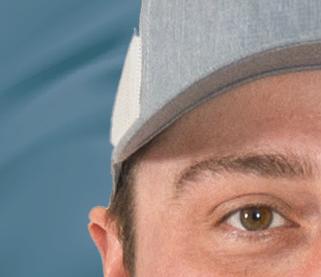









A study published in the journal BMC Psychiatry in 2021 found that 12.7 percent of students attending higher education showed SAD.


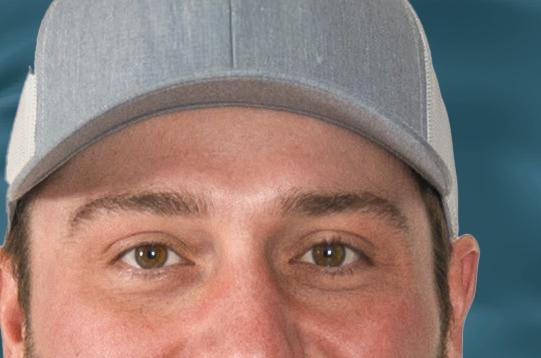
ccording to a study published in the journal Progress in Neurology and Psychiatry, in a given year about 5 percent of the population of the United States experiences seasonal depression, a condition also known as seasonal affective disorder, or SAD. A separate study published in the journal BMC Psychiatry in 2021 found that 12.7 percent of students attending higher education or vocational schools who responded to a survey showed SAD. The organization Mental Health America notes that SAD is a subtype of depression or bipolar disorder that occurs and ends around the same time every year, typically beginning in fall and continuing into the winter. Curiously, the study published in Progress in Neurology and Psychiatry found that the main age of onset of seasonal depression is between 20 and 30.


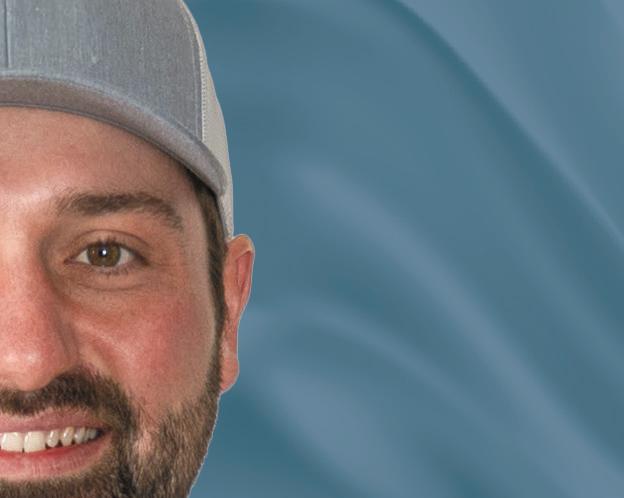












study published in the journal BMC Psychiatry in 2021 found that 12.7 percent of


students attending higher education showed SAD.











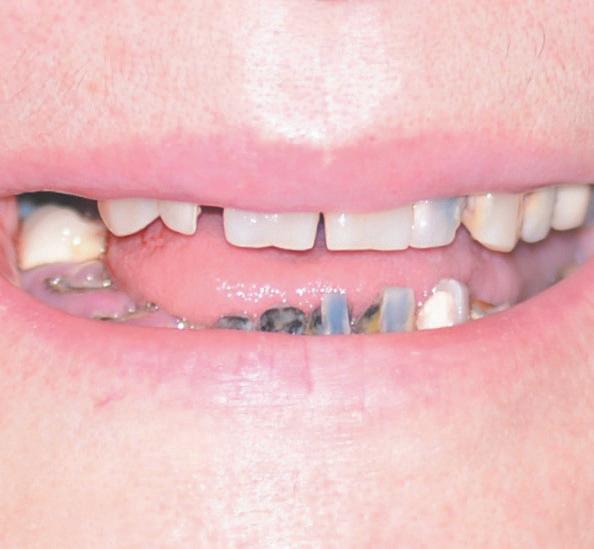

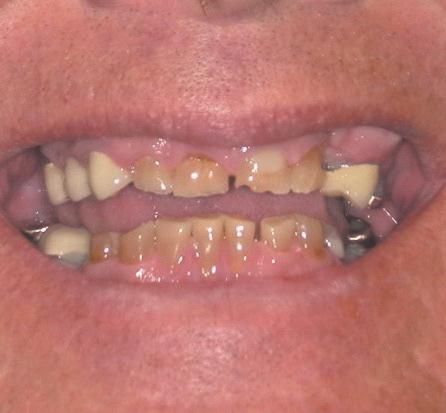

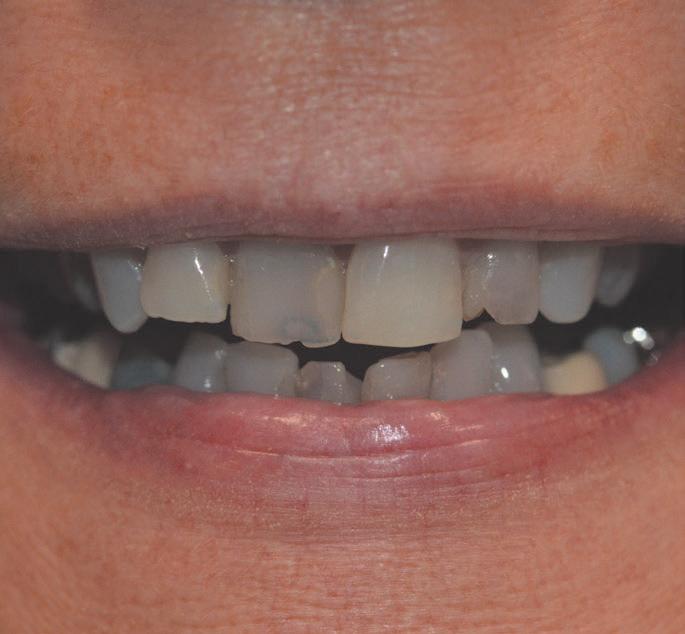


Long-term health is not something that many young people routinely consider After all, it’s easy to feel invincible during one’s childhood and adolescence But the steps that young people take early on can affect their health as they get older.
According to the Centers for Disease Control and Prevention, establishing healthy behaviors during childhood and adolescence is more beneficial to longterm health than trying to change poor behaviors in adulthood The following are some ways young people can set the course for healthy outcomes throughout life.
According to the childhood recreation group Mountain Kids, habits and actions performed subconsciously are hard to break because repeat habits trigger dopamine in the brain, causing pleasurable feelings that reinforce the behavior. So grabbing a slice of cake after school for a
snack becomes rote. Instead, stocking the refrigerator and pantry with sliced fruits and vegetables, low-fat yogurt, lean protein like hummus and whole wheat dipping crackers can set the course for more responsible eating behaviors.
Kids can learn what healthy eating and portion control looks like if it is modeled by their parents Children should be involved with reading nutrition labels and understanding the ingredients that comprise the foods they commonly eat When dining out, choose restaurants that utilize menus that indicate the caloric content of meals. Children will learn to recognize and embrace nutritious foods and that can continue into adulthood. Eating as a family also benefits mental health Stanford Children’s Health says eating together as a family can encourage children’s confidence in themselves and improve communication. Children who regularly converse and interact with their

parents may be less likely to engage in substance abuse or act out at school
The CDC says 21 percent of adolescents aged 12 to 19 are obese, and two in five students have a chronic health condition. A sedentary lifestyle may be one contributor to these statistics At home and in school, adults can encourage physical activity as an effective means to prevent obesity The Department of Health and Human Service recommends that children and adolescents age six and older get at least one hour a day of moderate or vigorous aerobic activity, such as running or biking. Muscle- and bone-strengthening activities
The CDC says 21 percent of adolescents 12 to 19 are obese, and two in five have a chronic health condition.
also are recommended Kids who learn early on to appreciate physical activity reap long-term benefits that extend well into adulthood.
Tobacco and nicotine vaping products can contribute to many negative health conditions Youngsters who avoid these products throughout their lives may improve longevity and reduce their risk for various illnesses
Children who learn healthy behaviors at a young age are more likely to continue those good habits into adulthood, which ultimately benefits their long-term health.
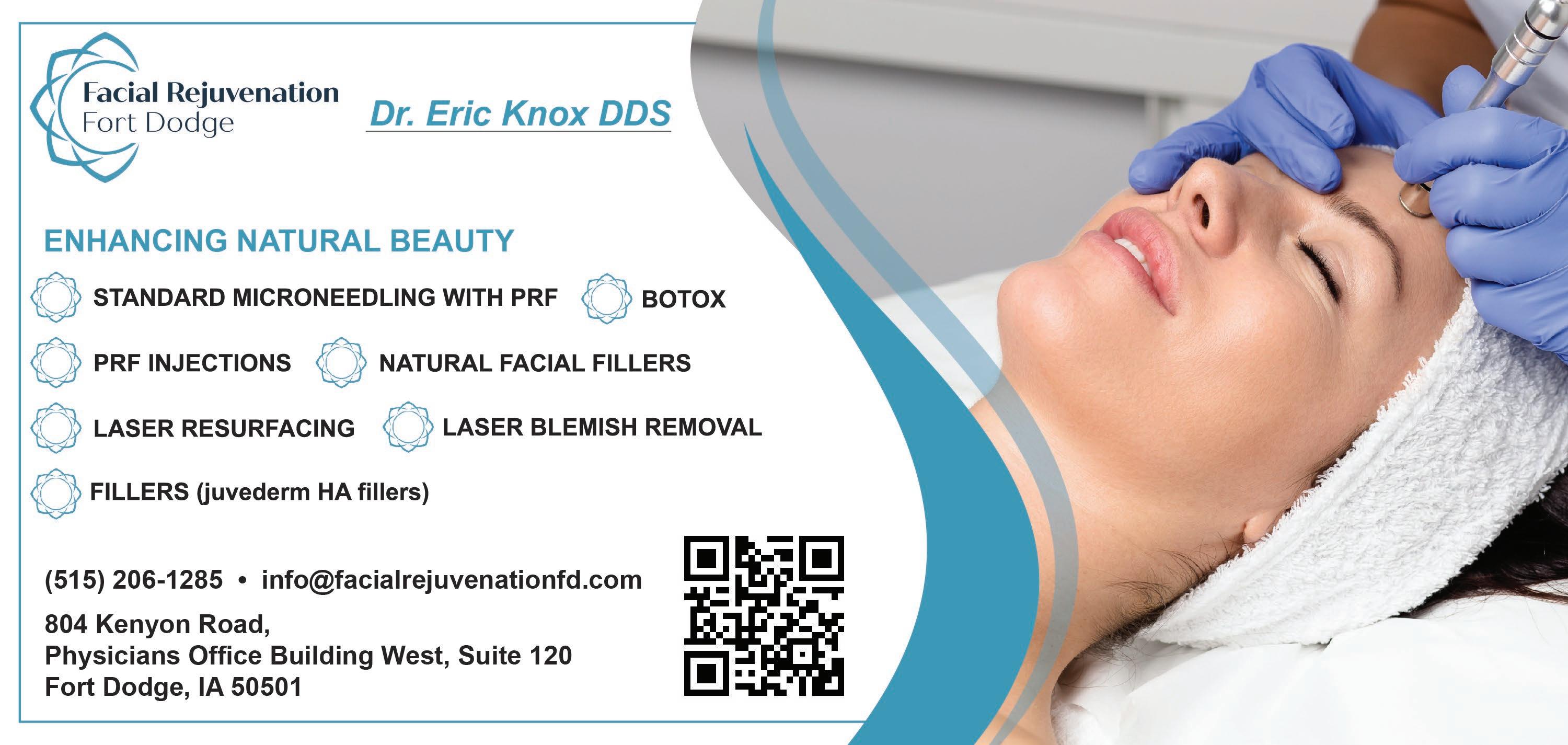


Data from the Centers for Disease Control and Prevention indicates that rates of anxiety and depression rose dramatically after the onset of COVID-19 According to the CDC, the range of average monthly percentages of adults in the United States reporting symptoms of anxiety between January and December of 2019 was 7 4 percent to 8 6 percent Between April 2020, or roughly three weeks after the World Health Organization declared a global COVID-19 pandemic, and August 2021, the average submonthly percentages of U.S. residents reporting symptoms of anxiety was between 28.2 percent and 37.2 percent. That means the rate of anxiety rose by about four times between April 2020 and August 2021. A similar spike was prevalent among U.S. adults reporting symptoms of depression during that same period Though percentages were between 5 9 and 7 5 percent between January and December 2019, they rose to between 20 2 and 31 1 percent between April 2020 and August 2021 These figures are important to keep in mind as the world tries to move on from the pandemic Despite individuals’ best efforts, rates of anxiety and depression could remain significantly higher than they were in 2019, underscoring the need for accessible education about each disorder.


Taking steps to safeguard mental health is a vital component of a healthy lifestyle. The National Institute of Mental Health notes that mental health affects how individuals think and feel, the choices they make, and how they relate to others, which underscores just how important it is to prioritize mental health Meditation is a popular practice with a history so lengthy it may surprise even its most devoted practitioners. According to Psychology Today, some archaeologists trace the origins of meditation all the way back to 5,000 BCE The global spread of the practice is believed to have started around the fifth or sixth century BCD, when trading along Eurasia’s famed Silk Road exposed the practice to various cultures.
The lengthy history of meditation is proof that the practice is no mere fad. In fact, people from all walks of life have much to gain from meditation Novices can start their meditation journeys with this basic rundown of a practice that has inspired devotees for thousands of years
What is meditation?
practice in which individuals form mental images of places or situations they find relaxing Guided meditation practitioners employ their senses of smell, sight, sound, and touch during a session, which may be led by a guide or teacher
Mantra meditation is another form of the practice in which individuals silently repeat a calming word, thought or phrase. The repetition is designed to block out distractions.
Mindfulness meditation is a popular form of the practice that emphasizes awareness, or mindfulness, and acceptance of living in the moment The Mayo Clinic notes that individuals practicing mindfulness meditation will focus on what they experience during meditation, such as the flow of their breath, as they attempt to observe their thoughts and emotions.
Mindful Communications, which offers corporate training, practical advice and other insights regarding mindfulness and meditation, notes that meditation is both simpler and more complex than most people think. But the following sevenstep prospectus can serve as a useful foundation for meditation novices
1. Take a seat. Individuals are urged to find a calm, quiet place to sit 2. Set a time limit. A short session between five and 10 minutes can help novices.
3. Notice your body. Individuals should be stable and sit in a position they can maintain for a while
4. Feel your breath. As you breath in and out, make an effort to feel the sensation of your breath
5. Notice if your mind wanders. It’s likely that your mind will wander to other places during your sessions. Pay attention to when it does and then refocus your attention to your breathing








The Mayo Clinic notes that meditation is considered a type of mind-body complementary medicine that intends to produce a tranquil, relaxed state of mind When practicing meditation, individuals focus their attention and aspire to remove potentially stress-inducing, jumbled thoughts from their mind
types of
The Mayo Clinic reports that there are various ways to meditate Guided meditation is a popular form of the
6. Don’t judge yourself. Wandering thoughts during meditation are not deserving of scorn When the mind wanders, simply return to meditating without obsessing over the thoughts that came into your head when your mind wandered off.
7. Close with kindness. As your session draws to a close, gently lift your gaze and take a moment to notice your surrounding environment, how your body feels and your thoughts and emotions
Meditation can pay numerous dividends. More information about meditation can be found at mindful.org.

• Eat a healthy, low-salt diet. A diet that’s rich in fruits, vegetables, whole grains, low-fat dairy products, skinless poultry and fish, nuts and legumes, and nontropical vegetable oils ensures people are getting ample nutrition from healthy sources The DASH (Dietary Approaches to Stop Hypertension) eating plan is designed specifically to help people manage their blood pressure and emphasizes limiting salt, red meat and foods with added sugars, including sweets and sugary beverages. It’s important that all people, and especially those with high blood pressure, limit their salt intake, as sodium is known to increase blood pressure

ypertension, a condition marked by abnormally high blood pressure, is more common than many people may recognize. A 2021 report from the U.S. Department of Health and Human Services indicated that nearly half of adults in the United States, or roughly 116 million people, have hypertension. And hypertension isn’t exclusive to Americans, as the World Health Organization notes that the number of people living with the condition has doubled to 1.28 billion since 1990.
Hypertension, a condition marked by abnormally high blood pressure, is more common than many people may recognize. A 2021 report from the U.S. Department of Health and Human Services indicated that nearly half of adults in the United States, or roughly 116 million people, have hypertension. And hypertension isn’t exclusive to Americans, as the World Health Organization notes that the number of people living with the condition has doubled to 1.28 billion since 1990.
Despite its prevalence, hypertension is not normal, nor is it something to take lightly. In fact, the American Heart Association notes that, if left undetected or uncontrolled, hypertension can lead to an assortment of serious, and potentially deadly, conditions, including heart attack, stroke, heart failure, and kidney disease
Despite its prevalence, hypertension is not normal, nor is it something to take lightly. In fact, the American Heart Association notes that, if left undetected or uncontrolled, hypertension can lead to an assortment of serious, and potentially deadly, conditions, including heart attack, stroke, heart failure, and kidney disease.
Since the threat posed by high blood pressure is so significant, it’s imperative that individuals know what to do upon being diagnosed with hypertension. The AHA notes that individuals diagnosed with hypertension can try various strategies to get their number down to a normal, healthy range.
Since the threat posed by high blood pressure is so significant, it’s imperative that individuals know what to do upon being diagnosed with hypertension. The AHA notes that individuals diagnosed with hypertension can try various strategies to get their number down to a normal, healthy range.
• Avoid excessive alcohol consumption. The AHA notes that excessive alcohol consumption can raise blood pressure. In addition, despite what popular misconceptions may suggest, there is no evidence to suggest that red wine consumption is good for heart health Like other alcoholic beverages, red wine should be consumed in moderation, if at all The AHA urges individuals to limit their alcohol intake to no more than two drinks per day for men and no one more than one drink per day for women.
• Avoid excessive alcohol consumption.
• Exercise regularly. Routine exercise benefits the heart in myriad ways, including helping people control high blood pressure Individuals recently


• Eat a healthy, low-salt diet. A diet that’s rich in fruits, vegetables, whole grains, low-fat dairy products, skinless poultry and fish, nuts and legumes, and nontropical vegetable oils ensures people are getting ample nutrition from healthy sources. The DASH (Dietary Approaches to Stop Hypertension) eating plan is designed specifically to help people manage their blood pressure and emphasizes limiting salt, red meat and foods with added sugars, including sweets and sugary beverages It’s important that al e blood pressure limit their salt in s e p
The AHA notes that excessive alcohol consumption can raise blood pressure. In addition, despite what popular misconceptions may suggest, there is no evidence to suggest that red wine consumption is good for heart health. Like other alcoholic beverages, red wine should be consumed in moderation, if at all. The AHA urges individuals to limit their alcohol intake to no more than two drinks per day for men and no one more than one drink per day for women
diagnosed with high blood pressure who are unaccustomed to physical activity should work with their physicians and a personal trainer to design an exercise regimen that’s within their abilities As their bodies get used to increased physical activity, people can then work with the same individuals to tweak their routines so they can keep making progress toward their fitness goals. Routine exercise also helps to reduce stress, which the AHA notes is another step people with hypertension should take to lower their blood pressure
• Shed extra weight. Each of the aforementioned strategies can help people shed extra weight, which is another step




the AHA recommends for people with high blood pressure The AHA notes that losing as few as 10 pounds can help to manage high blood pressure. Maintaining a healthy weight also reduces strain on the heart, thus lowering the risk for high blood pressure and the conditions that can arise from it.
More than 1 2 billion people across the globe are currently living with high blood pressure. Taking steps to reduce hypertension is a great way to promote long-term health and overcome this often silent killer
the AHA recommends high blood pressure. Th losing as few as 10 pou manage high blood pre a healthy weight also r heart, thus lowering th pressure and the condit from it.
More than 1.2 billion p globe are currently livi








ercise rcise fits th ing h igh pres ly
diagnosed with high blood pressure who are unaccustomed to physical activity should work with their physicians and a personal trainer to design an exercise regimen that’s within their abilities. As their bodies get used to increased physical activity, people can then work with the same individuals to tweak their routines so they can keep making progress toward their fitness goals. Routine exercise also helps to reduce stress, which notes is another step people hypertension should take to blood pressure.
• Shed extra weight. Each o aforementioned strategies ca shed extra weight, which is a
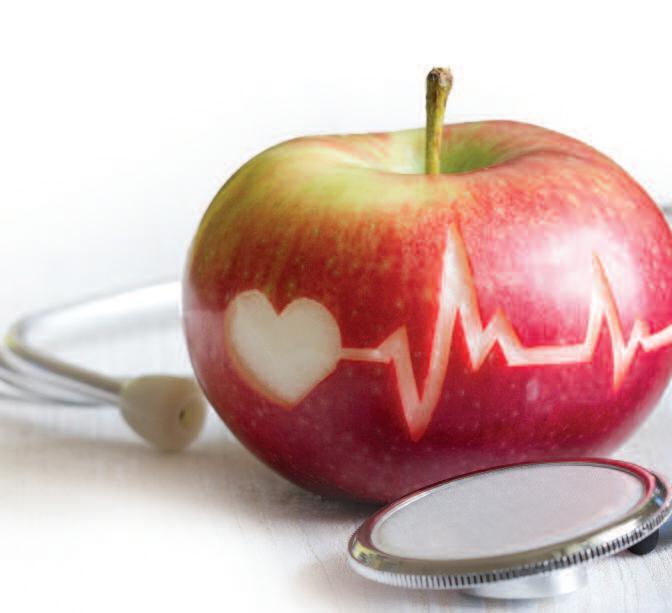

Repetitive strain injuries can upset workflow and compromise exercise routines. Though such injuries are often characterized as nuisances, for many people they’re much more than a minor inconvenience. Data from the Occupational Safety and Health Administration indicates that repetitive strain injuries (RSI) affect roughly 1 8 million workers in the United States each year Such injuries are common across the globe, as researchers in Sweden estimate that roughly one in 50 workers is suffering from the symptoms of RSI. These injuries also are not limited to adults, with one study from researchers at Australia’s University of Technology finding that 60 percent of children suffered discomfort when using a laptop
The Cleveland Clinic notes that RSI most commonly affect certain parts of the body, including:
• fingers and thumbs
• wrists
• elbows
• arms
• shoulders
• knees
These areas of the body are vulnerable when people routinely engage in activities in which they repeat the same motions. For example, office workers who spend eight hours a day typing away at their computers may develop RSI in their fingers, thumbs, wrists, and/or elbows Such workers need their jobs, so what are they and others who suffer work-related RSI to do? Prevention of RSI is not always so easy, but individuals can try various strategies to reduce their risk of developing RSI.
• Make adjustments to your workstation. Individuals whose RSI are a byproduct of sitting at a desk and working on a computer all day long can adjust their workstations to see if this helps reduce strains. For example, a keyboard wrist rest is an inexpensive accessory that can be placed between
Data from OSHA indicates that RSI affects 1.8 million workers in the U.S. each year.
users and their keyboards to keep their wrists in a neutral position and alleviate wrist pain that results from typing all day Mouse rest pads serve a similar function and can be equally effective A keyboard and mouse pad should be low enough to allow users to relax their shoulders.
• Consider replacing your desk and/or chair. Desks and chairs also could increase risk for RSI if it they are not compatible Office workers should be able to pull their chairs beneath their desk when they’re sitting and working If the desk is too small or low to the ground to allow that, or if the chair is not adjustable so it can be pulled up to the edge of the desk while working, workers’ posture could suffer, as they will be forced to lean into their desk and narrow their shoulders when typing The Cleveland Clinic notes that improving posture helps people avoid putting extra stress on their bodies that can contribute to RSI.
• Get up and walk around. Prolonged periods of sitting can increase the risk of RSI Sitting at a desk all day long without taking routine breaks means those parts of your body vulnerable to RSI, such as the wrists, elbows and shoulders, are not moving all day The strain that puts on these parts of the body increases RSI risk, which underscores the importance of taking routine breaks.
• Stretch before sitting down. Stretching may be something associated with a workout routine, but the principles of stretching also apply to sitting at a desk Exercise enthusiasts stretch to loosen and protect their muscles and tendons from injury, and the same idea can safeguard office workers as well. Some simple stretches throughout the day can keep muscles and tendons in the hands, elbows and shoulders loose and reduce the risk of RSI Individuals vulnerable to repetitive strain injuries can employ various techniques to reduce the likelihood that these painful and potentially debilitating conditions develop.



Sniffles, cough, sore throat these can be symptoms of any number of conditions, but are often a byproduct of the common cold.
Anxiety affects millions of people worldwide. The Anxiety & Depression Association of America indicates anxiety disorders are the most common mental illness in the United States, affecting 40 million adults age 18 and older every year, which equates to around 19.1 percent of the population.
Colds are the result of more than 200 different viruses, according to Johns Hopkins Medicine Adults experience an average of two to three colds per year, and rhinoviruses cause most of them The American Lung Association states that colds are minor infections of the nose and throat. Despite typically producing only mild illness, colds account for more visits to the doctor than any other condition in the United States
People will experience many colds in their lifetimes, and this true or false quiz can test their knowledge about them
1. Colds are highly contagious.
True: Colds most often spread when droplets of fluid that contain the cold virus are transferred by touch or inhaled.
2. Cold weather or being chilled causes colds.
The National Institute of Mental Health says anxiety disorders include panic disorder, generalized anxiety disorder, agoraphobia, specific phobia, social anxiety disorder, post-traumatic stress disorder, obsessive-compulsive disorder, and separation anxiety disorder. Though the causes of these anxiety disorders may differ, each is characterized by excessive anxiety and related behavioral disturbances
False: While many colds occur during seasons when the weather is cold, transmission is likely higher then due to people staying indoors, and thus closer to one another, when temperatures dip. But the cold air itself has nothing to do with the cold
Anxiety disorders can range from mild to severe, and could affect daily life in various ways. Those with anxiety disorders are three to five times more likely to visit the doctor and six times more likely to be hospitalized for psychiatric disorders than those who do not have anxiety disorders, states the ADAA
3. Antibiotics are a known remedy for a cold.
False: Antibiotics treat bacterial infections, while colds are viral. That means antibiotics will be ineffective at helping a person recover from a cold.
4. Rhinoviruses that cause colds also can trigger asthma attacks.
True: These rhinoviruses also have been linked to sinus and ear infections
Factors such as genetics, personality and lifestyle can determine if a person is likely to develop an anxiety disorder. According to Healthline, those in professions such as healthcare and social work, people of color and members of the LGBTQIA+ community are more likely to experience anxiety and elevated stress levels
cates dults der r.
teps people can take to very day.
5. Colds are sometimes serious for people.
True: People with weakened immune systems, asthma or conditions that affect the lungs and breathing passages may develop serious conditions, even pneumonia, from colds that linger
• Exercise: Moving more may help to relieve stress that can lead to anxiety Study participants who engaged in exercise two days per week reduced overall perceived stress. Physical activity also can improve mood.
6. Colds can’t be caught from shaking hands.
False: Colds can be transferred through touch, including shaking hands. It’s recommended to wash hands often with soap and water for at least 20 seconds or to use an alcohol-based hand sanitizer that contains at least 60 percent alcohol
• Sleep: Quality and quantity of sleep can affect mental health. Doctors recommend around eight hours of sleep each night. If anxiety is affecting sleep, try to establish a healthy sleep routine Turn off screens a few hours before attempting to retire Be sure the bed is comfortable Keep the room’s temperature on the cool side. Also, stick to a schedule.
7. You feed a cold and starve a fever.
False: Harvard Medical School says there is no need to eat more or less than usual if you have a cold or flu. However it is important to increase fluid intake to avoid dehydration Fluids also help keep the lining of the nose and throat from drying out
• Supplementation: Healthline notes that some studies have found that certain dietary supplements may help with stress and anxiety An eight-week study of 264 people with low magnesium levels found that taking 300 mg of this mineral daily helped reduce stress levels Combining magnesium with vitamin B6 was even more effective.
8. Vitamin C, zinc, eucalyptus, garlic, and others are not proven cold remedies.
True: Various herbs, minerals and other products have gained a reputation as cold remedies but there are no scientific studies that support such assertions
• Psychotherapy: The Mayo Clinic indicates counseling or psychotherapy, such as cognitive behavioral therapy, can effectively address anxiety CBT often includes exposure therapy, in which a person is gradually exposed to the object or situation that triggers the anxiety to eventually build confidence that he or she can manage the situation and anxiety symptoms.
9. One should avoid caffeine or alcohol while experiencing a cold.
True: Alcoholic and caffeinated beverages can lead to dehydration, which is the opposite of what the body needs to recover
• Medication: Used in conjunction with other techniques, medications may help address severe anxiety conditions Certain antidepressants and a medication called buspirone are used to treat anxiety disorders In limited circumstances, sedatives may be utilized, but long-term use is not recommended. Anxiety disorders can affect anyone. Various techniques could be used to alleviate anxiety.


Depression is among the most common mental disorders in the world According to a 2019 report from the Institute of Health Metrics and Evaluation, roughly 3 8 percent of the world’s population is affected by depression That percentage is higher among adults (5 percent) and even more so among adults 60 and over (5.7 percent).
Despite its prevalence, depression still carries a stigma, leaving many people to confront it in silence However, over the last several years, public attitudes toward mental health have shifted, compelling millions of people to recognize the severity of the threat posed by mental health disorders like depression. That recognition has led various prominent public figures, such as comedian Jim Carrey, athlete Kevin Love and singer/actress Lady Gaga, to publicly acknowledge their own battles with depression Depression is nothing to be ashamed of, and recognition of that reality may compel millions of people to seek the help they need. One of the first steps toward overcoming depression is to learn how it can manifest itself Though feelings of sadness are common in people with depression, according to ADA Health, depression is much more than a feeling of sadness, and its symptoms may be masked by physical complaints or substance abuse. That can make it hard to identify signs of depression, which underscores the significance of learning to spot its symptoms The National Institute of Mental Health notes that the following signs and symptoms could be indicative of depression if individuals have been experiencing them most of the day, nearly every day, for at least two weeks.
• Persistent sad, anxious, or “empty” mood
• Feelings of hopelessness or pessimism
• Feelings of irritability, frustration or restlessness
• Feelings of guilt, worthlessness or helplessness
• Loss of interest or pleasure in hobbies or activities
• Decreased energy, fatigue or feeling “slowed down”
• Difficulty concentrating, remembering or making decisions
• Difficulty sleeping, early morning awakening or oversleeping
• Changes in appetite or unplanned weight changes
• Thoughts of death or suicide, or attempts at suicide
• Aches or pains, headaches, cramps, or digestive problems without a clear physical cause that do not ease with treatment
It’s important that individuals experiencing these symptoms or those who witness them in loved ones avoid self-diagnosing their conditions or the condition of friends or family members If any of these symptoms are present for two weeks or more, contact a physician immediately or urge a loved one to do so More information about depression can be found at www.nimh.nih.gov/health/topics/ depression.

Distractions have never been harder to resist According to Deloitte’s “2022 Connectivity and Mobile Trends Survey” (third edition), the average household in the United States now has a total of 22 connected devices. Things are a little less connected in Canada, where a J.D. Power survey of television service subscribers found that the average household has about 10 devices The prevalence and accessibility of devices can make it difficult to focus, but tablets, smartphones and other technologies are not the only culprits that can compromise the ability to concentrate. Harvard Medical School notes that underlying medical conditions, the side
effects of medication and excessive alcohol consumption can each make it harder to focus. That’s a significant detriment, as an ability to focus can help individuals be more efficient and perform better at work and in school. Each individual is different, so efforts to improve focus might require a little trial and error until a person finds what works for them In the meantime, the following are some effective strategies that can help people sharpen their focus and reap all the rewards that a heightened ability to concentrate has to offer.
• Turn notifications off. Notifications are a bigger distraction than people may realize A 2015 study from researchers at

Florida State University found that simply hearing the ping of a notification was as distracting as taking a phone call Individuals may find the idea of answering as little as 20 or more phone calls per day unrealistic, but researchers have found that the average smartphone user receives around 80 push notifications per day. Such constant inflow of notifications is detrimental to smartphone users’ ability to focus Turning notifications off while in school or during the workday can help people avoid this seemingly endless stream of distractions, thus improving focus
• Establish a distraction-free workspace. A survey from McKinsey & Company found that, after the acute phases of the COVID-19 pandemic, 58 percent of employed respondents have the option to work from home for all or part of the week Remote working may be more convenient, but it also can compromise workers’ focus in ways that are unique to working from home. For example, professionals’ children cannot stroll into their offices when they aren’t working from home, nor are distractions like
television within arm’s length in a traditional office setting Professionals who are finding it hard to focus when working from home can do more to make their home offices distraction-free Make your home a television-free zone during traditional working hours and remove a television or non-work tablet from your office so you aren’t tempted to watch a show or a sporting event when you’re supposed to be working
• Adopt a healthier lifestyle. The experts at Harvard Medical School note that many aspects of a healthy lifestyle can help people focus better. Researchers have discovered a direct link between exercise and a person’s ability to pay attention, noting that exercise increases the availability of brain chemicals that reduce stress and improve sleep, among other things Less stress and a good night’s rest can make it easier to focus
An ability to focus pays myriad dividends Individuals can try various strategies to improve their concentration skills and reap the rewards that such improvement provides.


